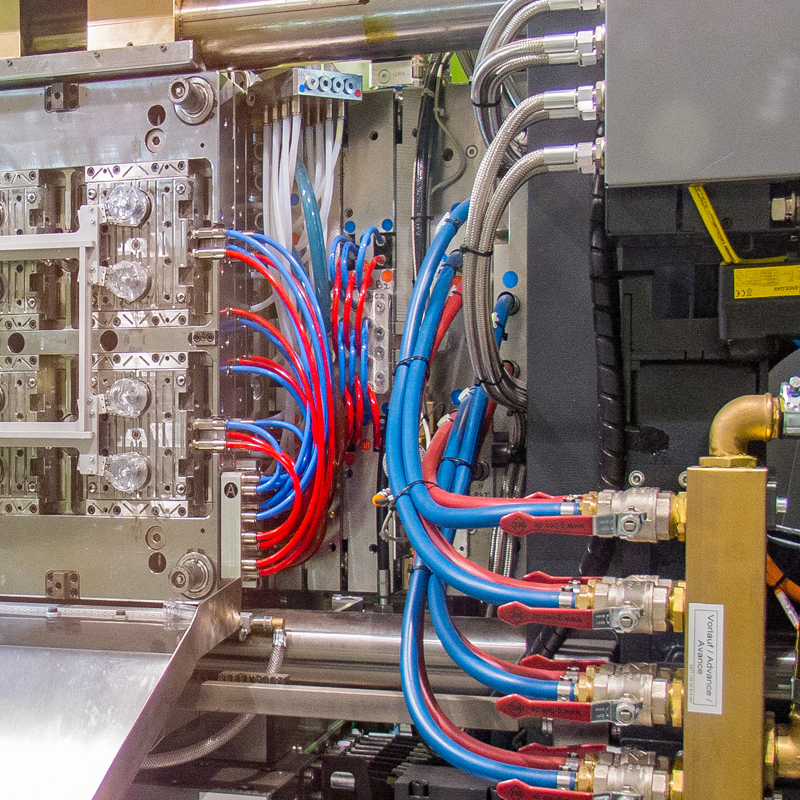When it comes to injection molding, one of the most critical and often overlooked stages in the manufacturing process is mold cooling. The cooling phase has a profound impact on both the efficiency and quality of the final product. A well-designed and optimized cooling system ensures uniform cooling, reduced cycle times, improved product quality, and lower production costs. In this blog post, we’ll take a deeper dive into the significance of mold cooling systems, the factors that influence their performance, the latest technologies, and best practices for optimizing cooling systems in injection molding.
The Importance of Mold Cooling in Injection Molding
Mold cooling is a vital part of the injection molding process, accounting for a significant portion of the overall production time. If the mold cooling process is inefficient or poorly designed, it can lead to various production issues, including internal stresses, warping, and dimensional defects. These issues can compromise the aesthetics, functionality, and durability of the molded part. In addition, inadequate cooling can lead to longer cycle times, increasing production costs and reducing overall efficiency.
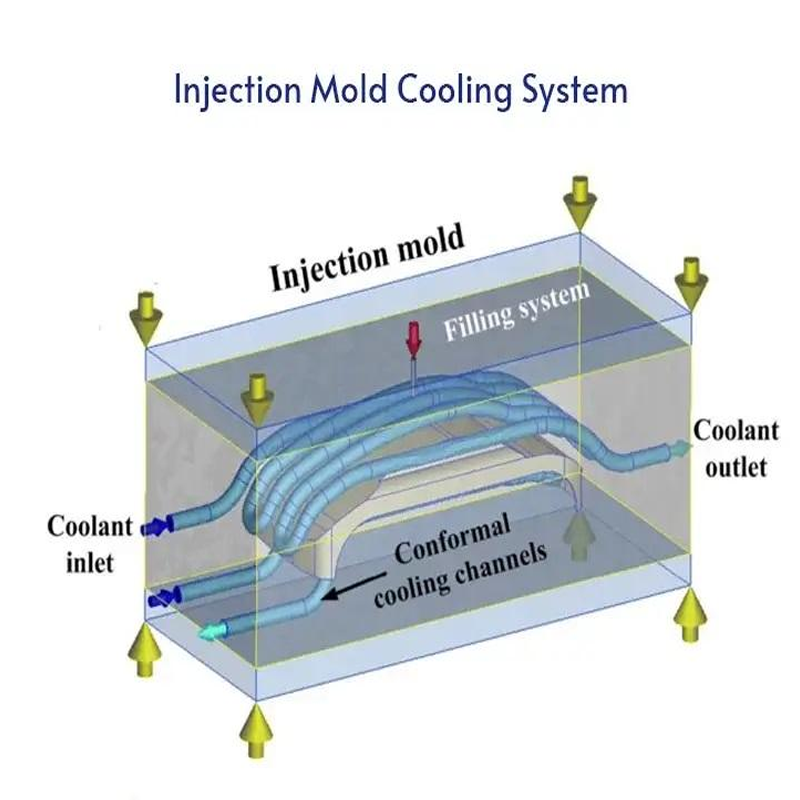
On the other hand, an effective cooling system ensures that the mold cools uniformly and quickly, reducing cycle times and producing parts with high precision and consistency. The result is a higher-quality product and improved operational efficiency, which translates into cost savings and a better bottom line.
Key Factors in Cooling System Design
Designing a mold cooling system requires careful consideration of several key factors, including the layout of cooling channels, the choice of mold materials, and the selection of cooling mediums. Let’s break these down in more detail:
1. Cooling Channel Layout
Cooling channels are the conduits through which the cooling medium—typically water—flows to absorb heat from the mold. The layout and design of these channels are critical in ensuring uniform cooling across the entire mold. Uniform cooling helps prevent issues like warping, internal stresses, and uneven shrinkage in the molded part.
Conventional cooling systems often rely on straight channels that follow a fixed distance from the mold surface. However, newer designs, such as conformal cooling, allow for more intricate and precise channel layouts that are adapted to the shape of the mold cavity. This can significantly improve cooling efficiency and reduce cycle times by ensuring that the cooling medium is distributed more evenly across the mold surface.
2. Mold Material
The material used to construct the mold plays a crucial role in how efficiently heat is transferred from the mold to the cooling medium. Materials with high thermal conductivity, such as copper alloys, allow for faster heat transfer and, therefore, more efficient cooling. However, these materials tend to be more expensive than other options like steel, which offers lower conductivity but is more cost-effective. Striking the right balance between material cost, mold durability, and cooling efficiency is a key challenge for designers.
3. Cooling Medium
Water is the most commonly used cooling medium in injection molding, but other fluids such as glycol-water mixtures, oils, and specialized additives can sometimes be used to enhance cooling performance. The flow rate and temperature of the cooling medium must be carefully controlled to optimize cooling efficiency. In some cases, adjusting the flow rate or adding additives to the cooling fluid can improve performance, but this requires a thoughtful approach to ensure that these adjustments do not compromise other aspects of the molding process.
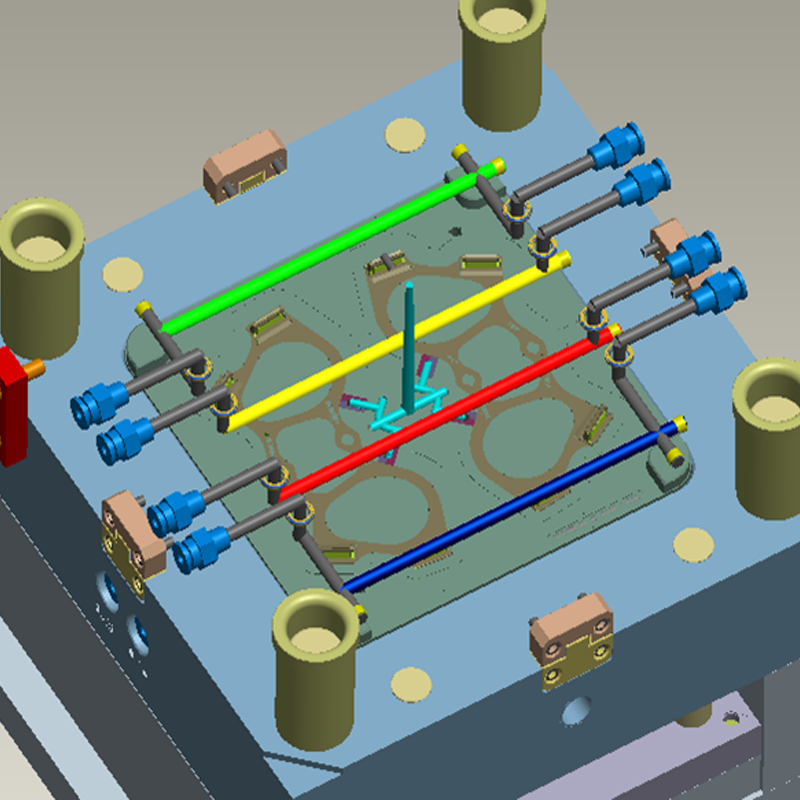
Optimizing Mold Cooling Systems
Once the cooling system is designed, optimization is necessary to ensure it performs at its best. Optimization involves refining various components of the cooling system, such as the channel layout, cooling medium parameters, and material choices. Below are some popular optimization strategies:
1. Computational Fluid Dynamics (CFD) Analysis
One of the most advanced methods for optimizing mold cooling systems is the use of Computational Fluid Dynamics (CFD) software. CFD simulations allow engineers to model the flow of the cooling medium through the mold’s cooling channels, enabling them to identify temperature hotspots or areas that are not being adequately cooled. By adjusting the channel layout or varying the flow rates of the cooling medium, engineers can fine-tune the cooling system to achieve more uniform cooling, faster cycle times, and improved part quality.
2. Conformal Cooling
Traditional cooling channels are often straight lines that follow fixed distances from the mold surface, leading to less uniform cooling. Conformal cooling, however, takes a more flexible approach. Using advanced technologies like 3D printing, conformal cooling channels can be designed to follow the precise contours of the mold cavity. This results in more efficient cooling, reduced cycle times, and better overall part quality, particularly for parts with complex geometries. Conformal cooling is becoming more accessible and increasingly popular, especially in industries where high-quality, precision parts are crucial.
3. Real-Time Temperature Monitoring
Another optimization technique involves using thermocouples and temperature sensors placed strategically within the mold. These sensors provide real-time data on the mold’s temperature, allowing engineers to continuously monitor and adjust the cooling system’s performance. With this data, flow rates and cooling medium temperatures can be fine-tuned during production, ensuring the cooling process is as efficient as possible and part quality remains consistently high.
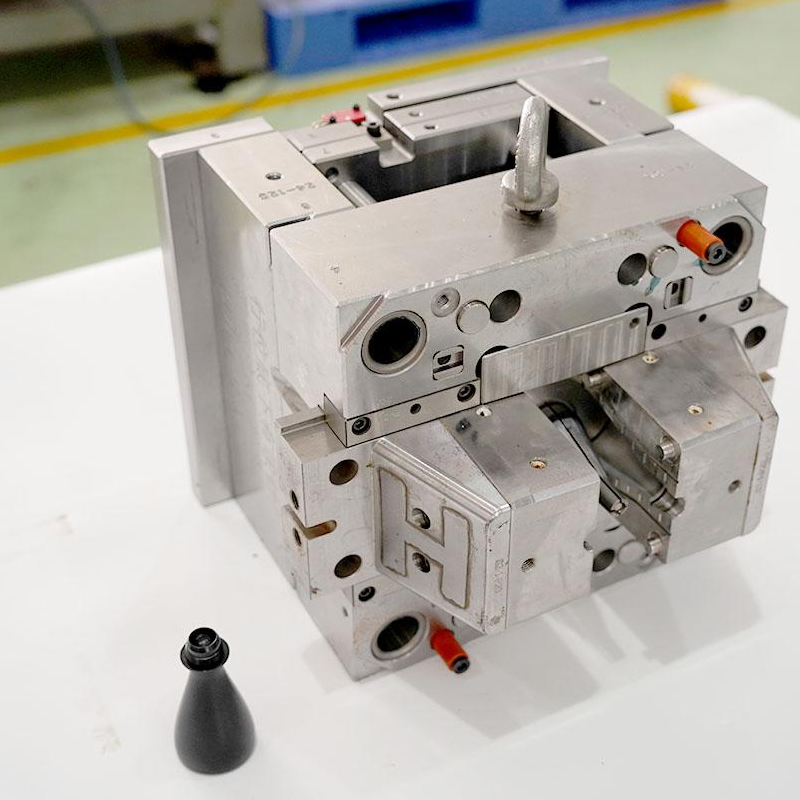
Advanced Cooling Technologies
Recent advancements in cooling technologies have made it possible to further improve the performance of injection molding cooling systems. Let’s look at some cutting-edge techniques:
1. 3D-Printed Conformal Cooling Channels
The introduction of 3D printing has revolutionized the design of mold cooling systems. With 3D printing, manufacturers can now create complex, conformal cooling channels that closely follow the contours of the mold cavity. This technique allows for better heat dissipation, faster cooling, and more consistent part quality. Using 3D-printed conformal cooling, cycle times can be reduced by up to 30%, offering significant cost and time savings.
2. Pulse Cooling
Pulse cooling involves introducing intermittent pulses of cooling fluid rather than a continuous flow. This method provides better temperature control, reduces energy consumption, and enhances cooling efficiency. Pulse cooling is particularly effective for molds that require precise temperature control to achieve high-quality finishes or complex part geometries.
3. Variotherm or Mold Temperature Control (MTC)
Variotherm is a technique that involves rapidly heating and cooling the mold during each cycle. This method is particularly useful for parts with complex geometries that require varying temperatures throughout the molding process. Although energy-intensive, Variotherm offers exceptional results, reducing the risk of defects and improving surface quality, especially for industries such as automotive and medical device manufacturing.
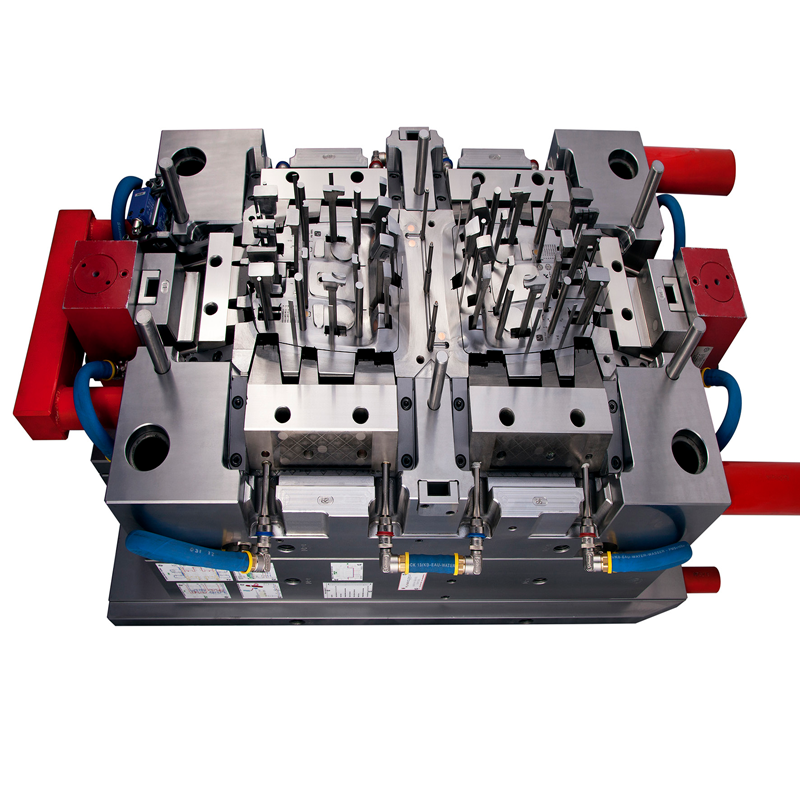
Overcoming Challenges in Cooling System Design
Designing and optimizing an efficient mold cooling system isn’t without its challenges. Some of the key obstacles include:
- Balancing Efficiency and Cost:Advanced cooling technologies like 3D-printed conformal cooling and pulse cooling can significantly improve performance but may come with higher upfront costs. Engineers must carefully assess whether these investments will yield a good return in terms of reduced cycle times and enhanced product quality.
- Complex Part Geometries:Parts with intricate designs or varying wall thicknesses present significant challenges for achieving uniform cooling. Advanced design strategies, including the use of conformal cooling, are essential to address these challenges.
- Material Limitations:Some high-conductivity materials may not be suitable for all molding applications due to durability or wear resistance concerns. Engineers need to choose the right material mix to ensure both durability and cooling efficiency.
Best Practices for Designing Efficient Mold Cooling Systems
To ensure your mold cooling system is optimized for maximum performance, follow these best practices:
- Use CFD simulations:Before beginning mold production, conduct comprehensive simulations using CFD software to fine-tune the cooling channel layout and optimize cooling efficiency.
- Place cooling channels strategically:Position channels as close to the mold surface as possible to maximize heat transfer and cooling efficiency.
- Ensure ease of maintenance:Design cooling channels with accessibility in mind, ensuring they can be easily cleaned and maintained to prevent blockages.
- Monitor performance continuously:Regularly monitor the cooling system’s performance using real-time data from sensors, making adjustments as needed to improve efficiency.
- Combine cooling techniques:Use a hybrid approach by combining traditional cooling methods with advanced techniques like conformal cooling and high-conductivity inserts for better cooling performance.
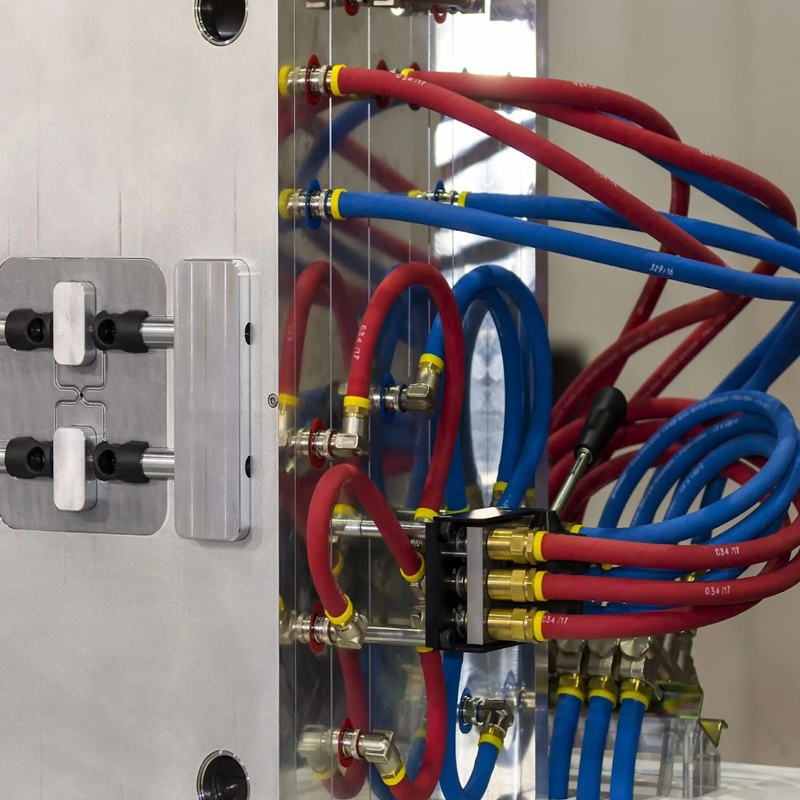
Conclusion
Effective mold cooling system design and optimization are crucial for improving both the quality of your molded parts and the efficiency of your manufacturing process. By carefully considering factors like cooling channel layout, mold material, and cooling medium, and leveraging advanced technologies like CFD analysis, conformal cooling, and Variotherm, you can achieve significant improvements in cycle times, part quality, and overall production costs.
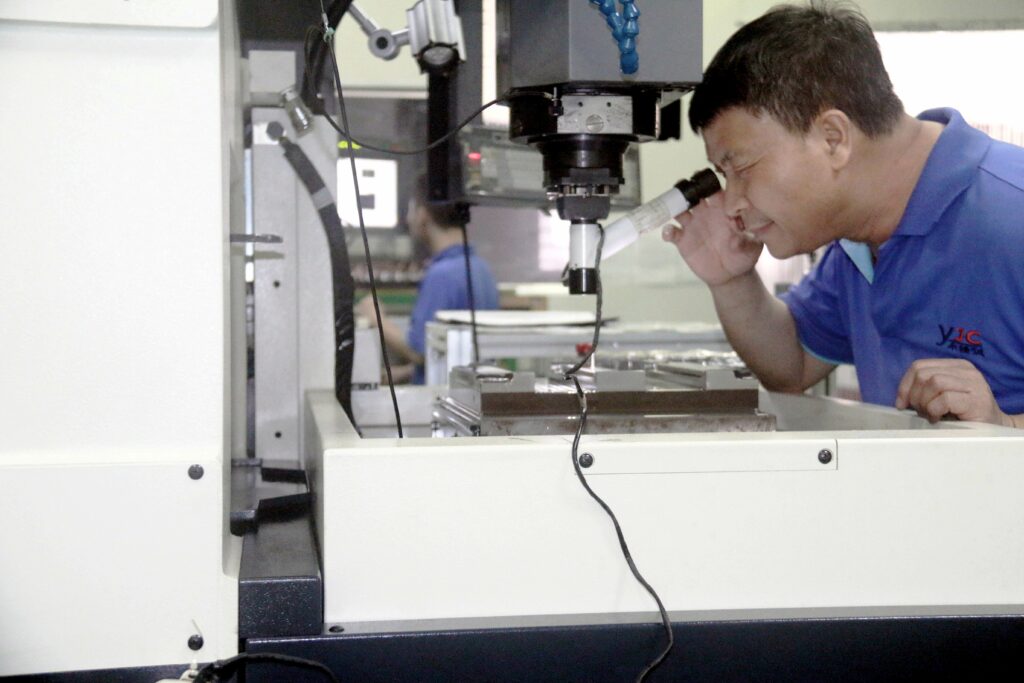
At Toolingsun, we specialize in providing cutting-edge mold design and cooling system solutions. Our team of experts is committed to helping you achieve optimal performance with our advanced technologies and state-of-the-art equipment. If you’re looking to enhance your injection molding process or need assistance with mold cooling system optimization, we’re here to help.
Want to learn more? Contact us today to discuss how we can help you optimize your mold cooling systems for better quality, efficiency, and cost-effectiveness. Let’s make your injection molding process more efficient together!

